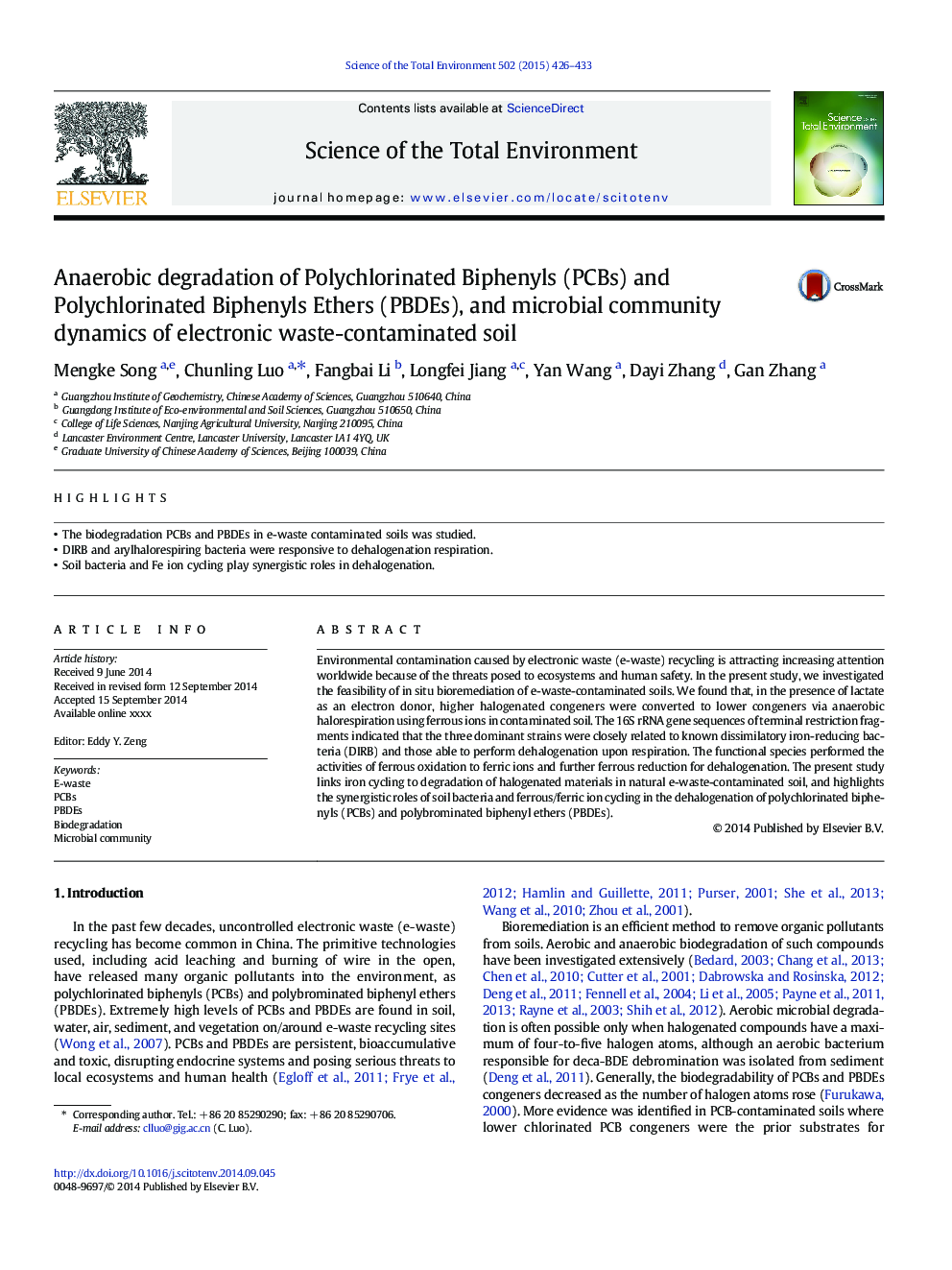| Article ID | Journal | Published Year | Pages | File Type |
|---|---|---|---|---|
| 6328504 | Science of The Total Environment | 2015 | 8 Pages |
Abstract
Environmental contamination caused by electronic waste (e-waste) recycling is attracting increasing attention worldwide because of the threats posed to ecosystems and human safety. In the present study, we investigated the feasibility of in situ bioremediation of e-waste-contaminated soils. We found that, in the presence of lactate as an electron donor, higher halogenated congeners were converted to lower congeners via anaerobic halorespiration using ferrous ions in contaminated soil. The 16S rRNA gene sequences of terminal restriction fragments indicated that the three dominant strains were closely related to known dissimilatory iron-reducing bacteria (DIRB) and those able to perform dehalogenation upon respiration. The functional species performed the activities of ferrous oxidation to ferric ions and further ferrous reduction for dehalogenation. The present study links iron cycling to degradation of halogenated materials in natural e-waste-contaminated soil, and highlights the synergistic roles of soil bacteria and ferrous/ferric ion cycling in the dehalogenation of polychlorinated biphenyls (PCBs) and polybrominated biphenyl ethers (PBDEs).
Related Topics
Life Sciences
Environmental Science
Environmental Chemistry
Authors
Mengke Song, Chunling Luo, Fangbai Li, Longfei Jiang, Yan Wang, Dayi Zhang, Gan Zhang,
